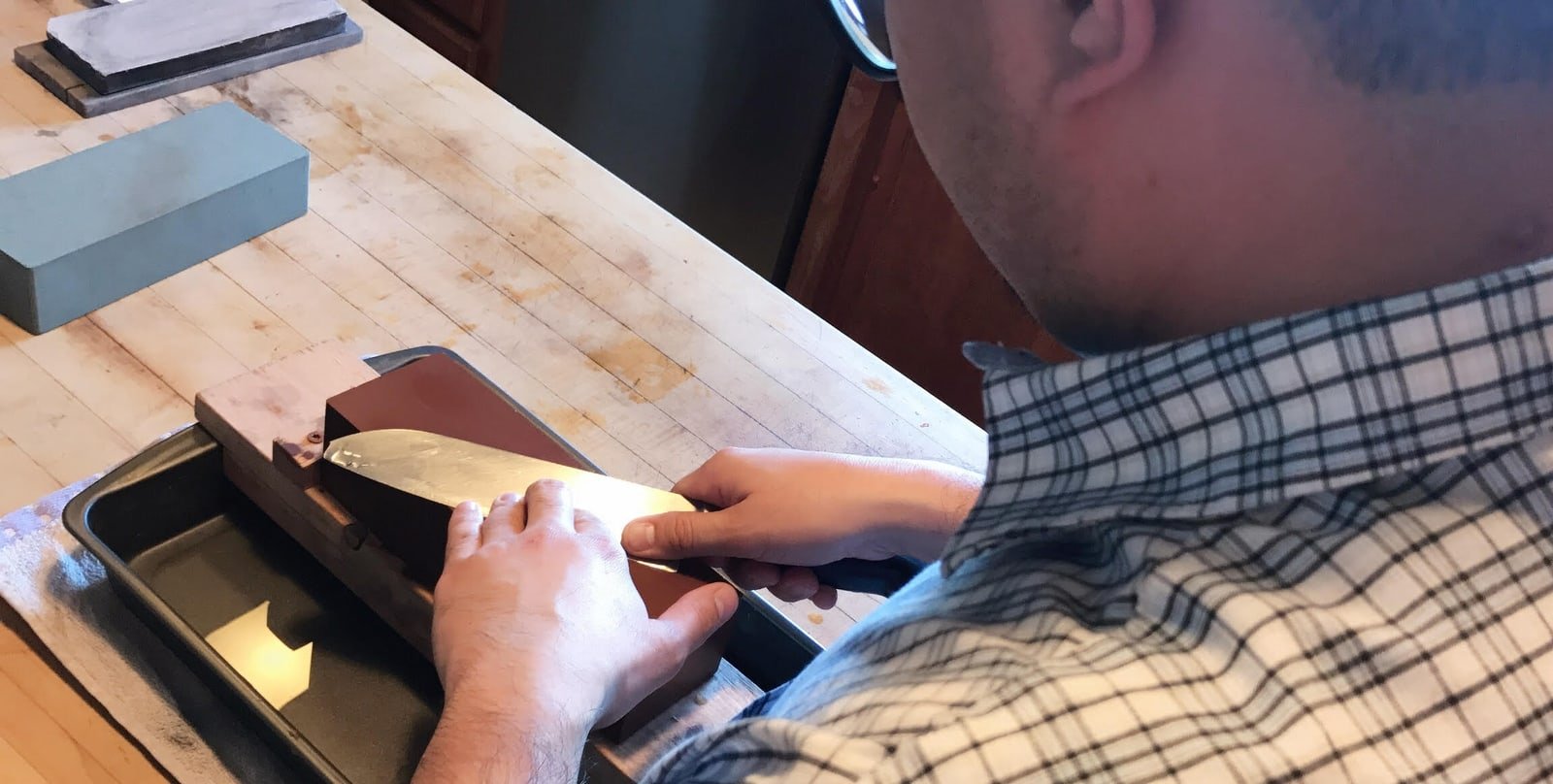Knife Sharpening: A Multigenerational Art
Being raised in an intergenerational household made for an interesting upbringing. Like some of my peers, I was not born simply a Yonsei (4th generation Japanese American) or Gosei (5th generation Japanese American), but rather half-Yonsei and half-Shin-Nisei (2nd generation Japanese American who came to the US post-WWII). My dad moved to the US in 1976 for adventure; arriving in Gardena with an English degree and some pocket change, he quickly found interest in the art of sushi making. After many years of working for someone else, he and my mom decided to open their own restaurant in Oceanside. For over 20 years, my dad cleaned fish, sharpened his knives, cleaned fish, and sharpened his knives – all of which was behind the scenes, hidden from view of his customers (and even me).
Kent and his father checking out the Marume family rice field in Hitoyoshi City, Kumamoto, Japan.
Fast forward to 2008. A year after we sold the restaurant, I found him sharpening our kitchen knives on three wet stones. This was a curious sight because up until that point, I had only seen my mom sharpen our knives with the typical steel rod you find in knife blocks. When I was in Boy Scouts, I’d learned how to sharpen knives on paper wheels and various sharpening instruments, but never on wet stones. So naturally, with its deep roots in Japanese culture, I gravitated to learning how to sharpen on wet stones from my dad.
"So naturally, with its deep roots in Japanese culture, I gravitated to learning how to sharpen on wet stones from my dad."
A word of caution: knife sharpening can be a dangerous practice.
STONES:
3 wet stones (from left to right): Course, Medium, and Fine
There are three primary stones, all of which should soak in water prior to use. To give a better understanding, they can be compared to different sandpaper grit:
1) Coarse - The first stone is rough, very course, and is similar to approximately 80 grit sandpaper. It’s primarily used in reshaping and doing the “heavy lifting.”
2) Medium - The second stone is medium course and is comparable to 800 grit sandpaper. It’s used for shaping and sharpening the edge.
3) Fine - The third stone is fine and is equivalent to 1500 grit sandpaper. This stone is used to buff the edge and give it a shiny looking finish – it helps keep the blade for longer.
TECHNIQUE:
Since learning the basics years ago, I’ve always found the technique to be challenging, especially if you want to avoid scratching the face of the blade and preserve the edge. This is where years of experience and repetition come in. In general, you never sharpen the blade toward the edge, but rather away from it.
"This is where years of experience and repetition come in."
For right-handed users, place two to three fingers on the side of the blade, and push away to sharpen the right side.
Kent sharpening a kitchen knife on the right side of the blade.
To sharpen the left side, place two to three fingers on the side of the blade and pull toward the user. Because there’s no special instrument to help the user maintain the blade’s angle, the overall technique is to keep the edge at a 10 to 15 degree tilt (about 1-2 dimes).
Kent sharpening a pocket knife on the left side of the blade.
This technique can be applied when using all three stones and it is best to maintain consistency for best results – 20 reps on each side followed by an edge check is recommended.
EDGE LOGISTICS:
When you sharpen one side of the blade, you’ll find that a “burr” forms on the opposite side of the edge. This is perfectly fine and is part of the process. To eliminate the burr, maintain consistency on each side and finish sharpening by doing one repetition on each side. The most important takeaway is to ensure that the burr is gone when finished.
Kent’s father, the master, at work!
Whether you’re a Boy Scout trying to keep your pocket knife sharp or a sushi chef prepping to fillet a large tuna, knife sharpening is a practice that I think is valuable and a skill that everyone should know. Be safe and have fun!







